
Cast aside preconceptions of tanned, juiced-up gym bros with pumped-up veins – when you strip it right back, bodybuilding is about just that: building your body.
(Related: 5 muscle-building tips from a professional bodybuilder)
Just ask IFBB pro champ and USN sports nutrition ambassador, Ryan Terry. Not only did the labourer-turned-lifter win the Arnold Classic last year, he was also the highest placed Brit in Mr Olympia, so the competitive bodybuilder knows a thing or two about muscle mass.
“The majority of people think bodybuilders are ‘mass monsters’, and generally not very healthy-looking people,” Terry explains. “But it’s really anyone who is trying to build or sculpt their body.”
(Related: Training secrets from bodybuilding champion Ryan Terry)
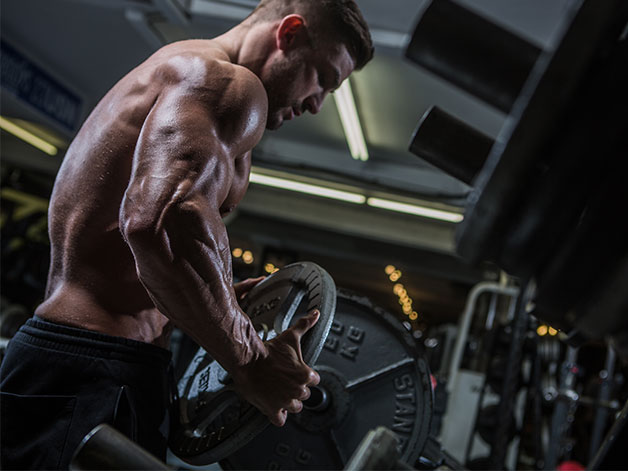
Bodybuilding culture may have changed, but the principles remain the same
The industry, Ryan says, has changed dramatically in the last 10 years. Once small and niche, with a focus on packing on size; these days it’s “very much a mass market”. Health has taken precedence and people are increasingly striving for attainable, functional looks.
Bodybuilding culture may have evolved, but tried-and-tested training advice that has defied decades remain key. “I’ve tried a lot of different techniques, but you can’t beat the old bodybuilding way,” he says. “Why try and fix something that’s not broken?”
If you want to get serious about bodybuilding, you’ll need to navigate your nutrition and training with military precision. Your regime will differ wildly if you’re gunning for gains (bulking) vs shredding fat (cutting) 12 weeks out from a competition. Needless to say, there’s not much room for a Friday night pint in either of these.
(Watch: Ronnie Coleman’s greatest lifts)
Let’s not get ahead of ourselves, this is going to be tough, but it’s achievable.
Everything a beginner needs to know about bodybuilding…
… including the good, the bad, and the old-school.
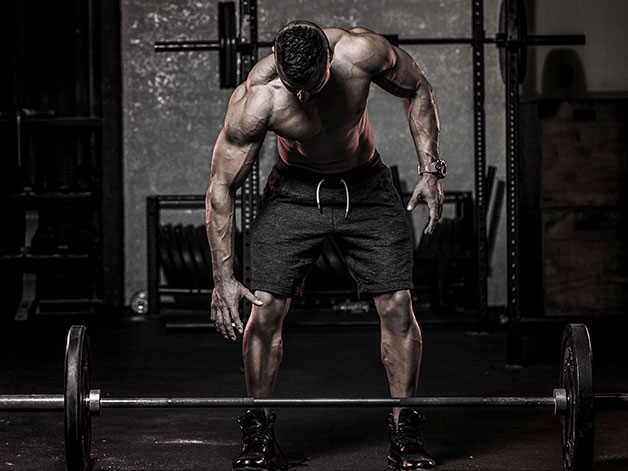
(Related: How to get single digit body fat, safely)
Bodybuilding training splits
A question nearly every beginner asks: how many hours of training should you average a week to become bigger and more defined?
The answer is this: it really depends on your training splits.
There are a number of ways, however, you can tackle them – for example, splitting them by upper and lower body exercises or focusing on push and pull motions – and then even more ways of scheduling them: every other day, four days on three days off, and so on.
Generally speaking, the best routine is the one that fits in with your life. If Arnie’s notoriously hardcore double-split (six times per week, twice a day) doesn’t really tie in with your schedule, guess what? You’re unlikely to stick at it.
(Related: The bodybuilder’s guide to building muscle)
Terry follows the old-school bodybuilding mentality of isolating each muscle group (back, shoulders, chest, legs and arms) on a five-day cycle. If he’s trying to grow a certain muscle group, he’ll introduce a second workout on the sixth day. Each of Terry’s workouts lasts between 60 and 90 minutes – “any longer and you’re either not pushing yourself hard enough or you’re talking too much” – and he makes the most of each session by targeting different parts of each muscle.
The best bodybuilding workouts
There are a few essential muscle-building moves to focus on if you’re after bodybuilder bulk. The staple compound lifts – things like squats, deadlifts, shoulder press, bench press – are vital in any routine worth its salt.
(Related: 5 muscle-building tips from a pro bodybuilder)
If you’re starting from scratch, try this simple but effective training split to begin with…
The bodybuilder’s back workout for beginners
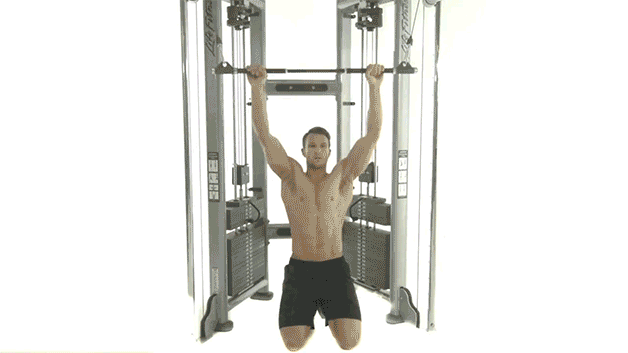
Wide grip pull-down
3 sets of 12 reps
– Grip the bar with shoulder-width palms facing away and your arms fully extended above your head. Do not lean back as you pull the bar to the top of your chest and hold it there for two seconds.
– Control the bar as it pulls itself back to the start position, aiming for a three second ascent with no pause at the top of the movement.

Bent-over row
3 sets of 12 reps
– Grab a barbell with an overhand grip, hands slightly wider than shoulder width apart.
(Related: Watch Dorian Yates in action)
– With your legs slightly bent, keep your back perfectly straight and bend your upper body until it’s almost perpendicular to the floor.
– From here, row the weight upwards into the lower part of your chest. Pause. And return under control to the start position.
(Related: How to master the bent-over row)
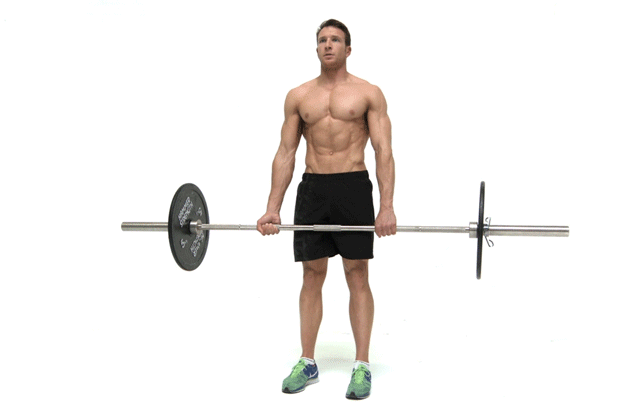 Deadlift
Deadlift
3 sets of 12 reps
– Squat down and grasp a barbell with your hands roughly shoulder-width apart. Keep your chest up, pull your shoulders back and look straight ahead as you lift the bar. Focus on taking the weight back onto your heels and keep the bar as close as possible to your body at all times.
– Lift to thigh level, pause, then return under control to the start position.
(Related: How to get more from the deadlift)
The bodybuilder’s chest workout for beginners
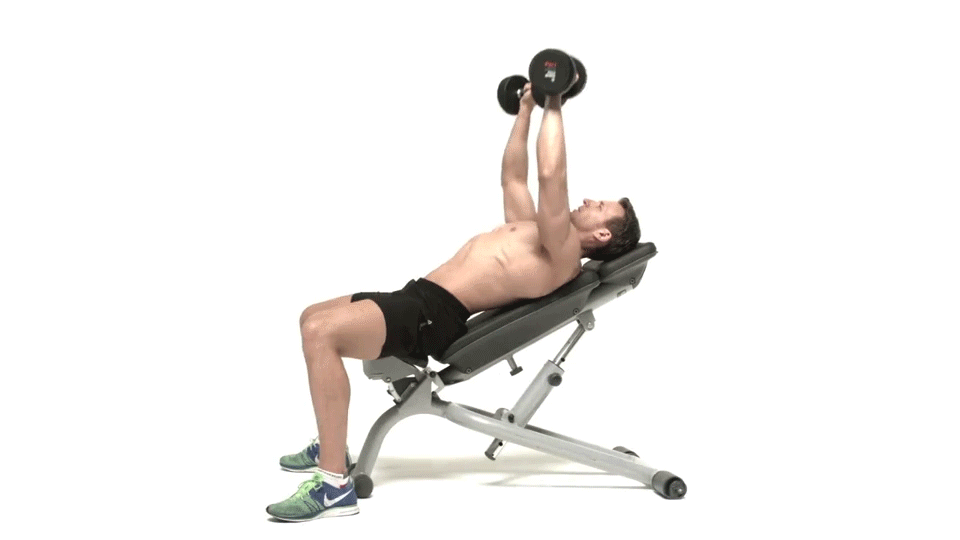
Incline press
3 sets of 12 reps
– Lie back on a bench set to an incline angle and lift a barbell to shoulder height, palms facing away from you. Breathe out as you press up with both arms.
– Lock out your arms and squeeze your chest before returning slowly to the start position.
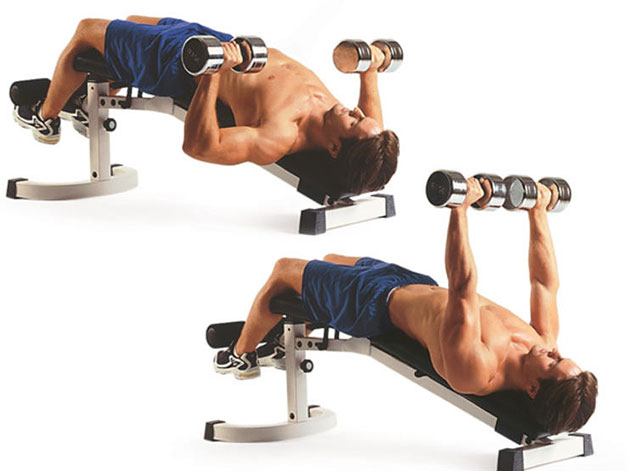
Decline press
3 sets of 12 reps
– Hold a dumbbell in each hand, shoulder-width apart and overhand grip. Lie back on a decline bench and extend your arms straight above you.
– Lower the weights slowly until they reach your chest, then push the dumbbells back to starting position.
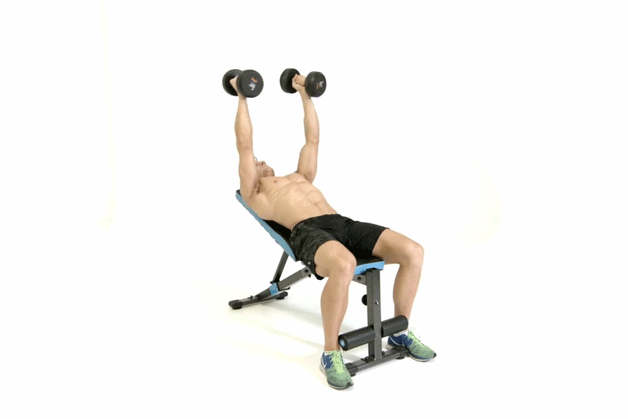
Flat bench fly
3 sets of 12 reps
– Lie down on a flat bench holding two dumbbells at your shoulders with your palms facing inwards. Press the dumbbells up until your arms are almost fully extended. This is your starting position.
– From here, with a slight bend in your arms, arc the weights down to your sides until you feel a stretch across your chest.
– Squeeze your pecs to return the weights to the start position by reversing the movement.
The bodybuilder’s shoulder workout for beginners

Dumbbell lateral raise
3 sets of 12 reps
– Grab some moderately light dumbbells that you don’t struggle to lift. Hold them next to your sides, with a slight bend at your elbow. Stand with your feet shoulder-width apart and squeeze your core, bending your elbows.
– Raise your arms straight out to your sides, maintaining your elbow position, until they reach shoulder height.
– Pause at the top for a beat, then lower the weights at a controlled pace back to the starting position.
(Related: How to build bigger shoulders with lateral raises)
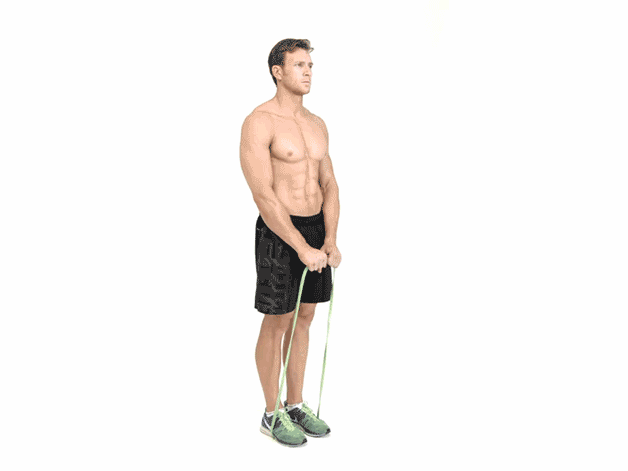
Resistance band raise
3 sets of 12 reps
– Stand on a resistance band and hold the band with underhand grip about shoulder width apart.
– Curl the band until it’s in line with your collar bone and your forearms touch your biceps. Lower and repeat.
(Related: Resistance bands are as good as the bench press)

Face pulls
3 sets of 12 reps
– Attach rope handles to the top pulley on a cable machine. Kneel in front of it with one foot forward and flat on the grand.
– Grab the handles and pull them towards your face, drawing your hands apart and taking care to keep your upper arms flat. Pause, then reverse the movement.
The bodybuilder’s leg workout for beginners
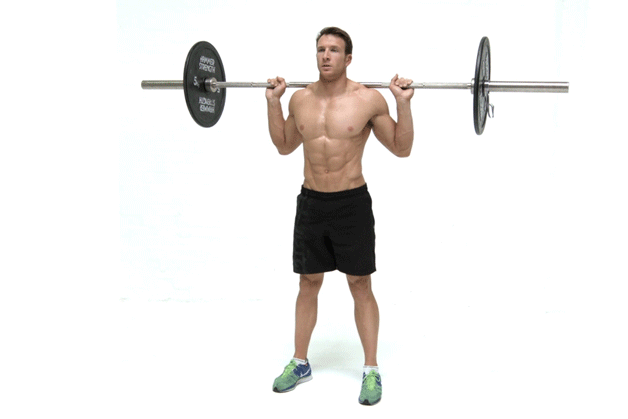
Barbell back squat
3 sets of 12 reps
– Stand with your feet more than shoulder-width apart. Hold a barbell across your upper back with an overhand grip, and hug the bar into your traps.
– Take the weight of the bar and slowly squat down – head up, back straight, buns out. Lower yourself until your hips are aligned with your knees, with legs at 90 degrees.
– Drive your heels into the floor to push yourself explosively back up.
(Related: How to perfect your squat form)
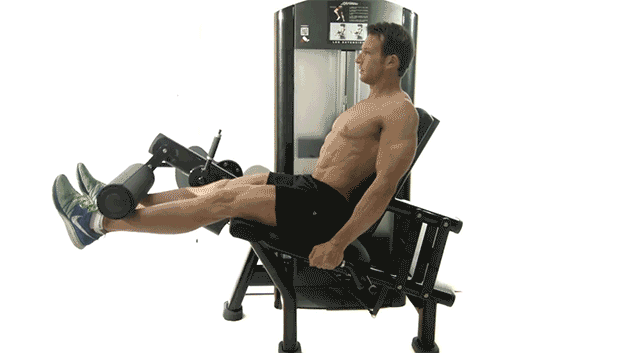
Leg extension
3 sets of 12 reps
– Sit in a leg extension machine with your ankles against the lower pad.
– Use your quads to push forward and straighten your legs in front of you, then return to the start position.
(Related: Why you should never skip leg day)
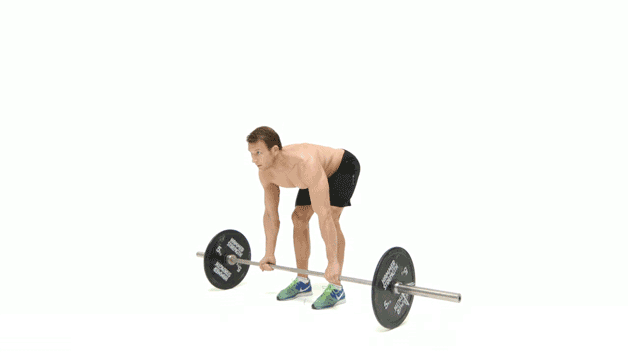
Romanian deadlift
3 sets of 12 reps
– Stand behind a grounded barbell. Bend your knees slightly to grab it, keeping your shins, back and hips straight.
– Without bending your back, push your hips forwards to lift the bar. From upright, push your hips back to lower the bar, bending your knees only slightly.
The bodybuilder’s arm workout for beginners
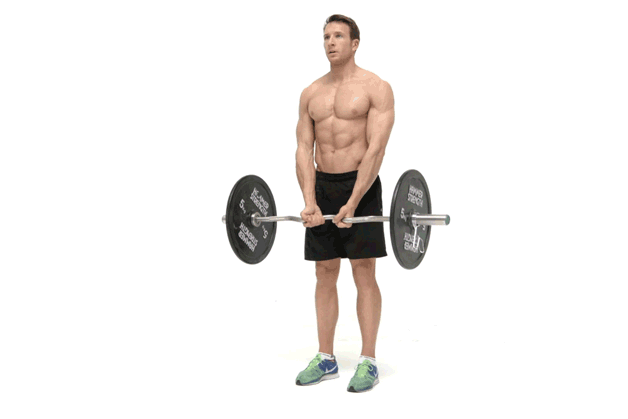
EZ bar curl
3 sets of 12 reps
– Hold the EZ bar in front of your thighs on the outermost grips and palms facing away from you. As you breathe in, curl the bar until your hands are at your shoulders.
– Squeeze your bicep, then lower under control.
(Related: Try this EZ bar biceps challenge)

Crossbody dumbbell hammer curl
3 sets of 12 reps
– Stand holding two dumbbells by your sides, palms facing towards each other. One at a time, curl each weight up towards your opposing shoulder.
– Return under control to the start position and repeat on the other side.
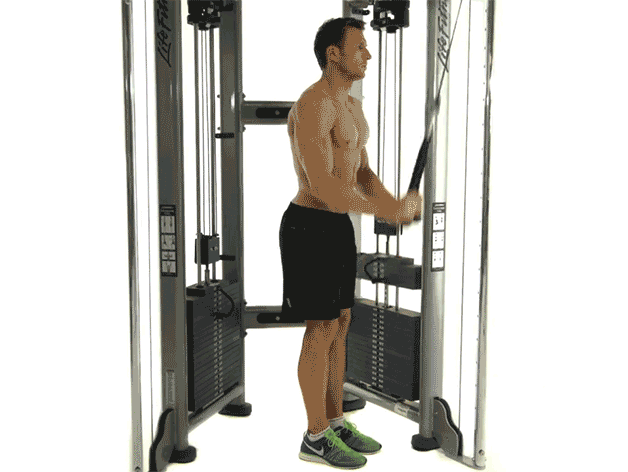
Tricep rope pushdown
3 sets of 12 reps
– Attach a rope handle to the high pulley of a cable station. Keeping your elbows tucked in at your sides grab the handle, tense your core, and bring your hands down until your arms are fully extended, then return to the starting position.
– Only your forearms should move.
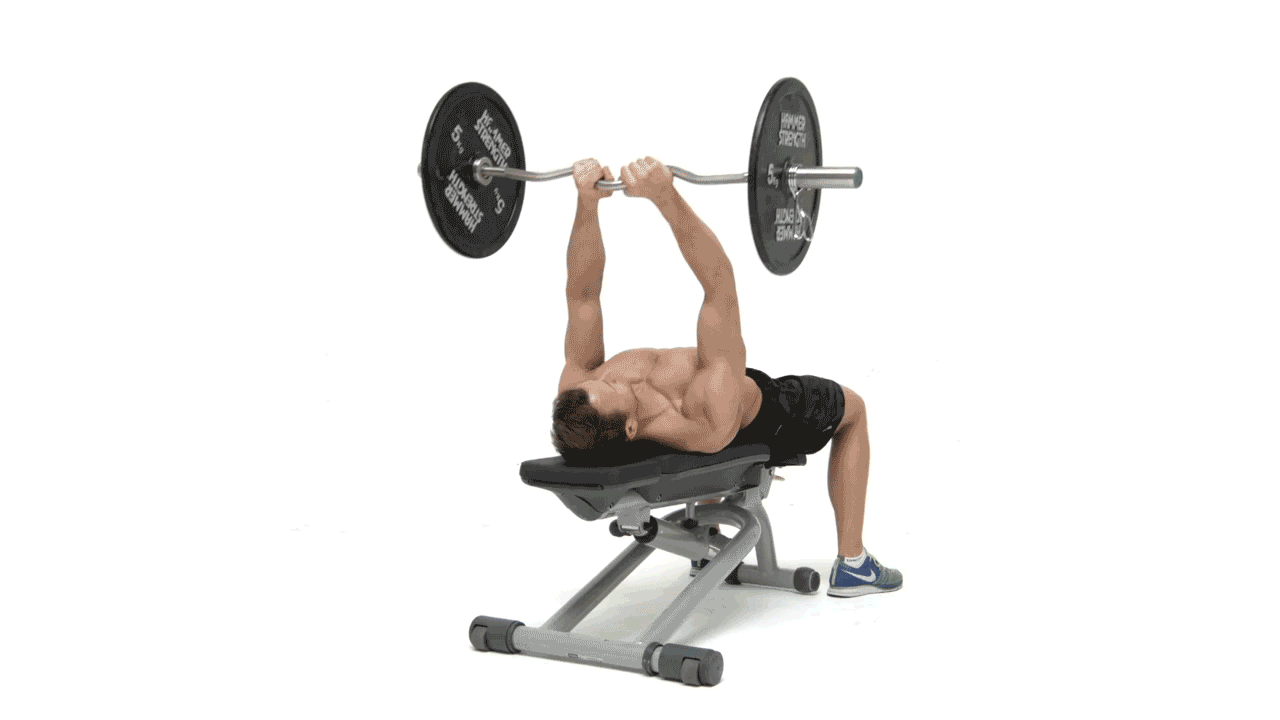
EZ bar skull crusher
3 sets of 12 reps
– Hold the EZ bar on the inner grips and extend your arms straight up. Keeping your elbows fixed and tucked in, slowly lower the bar until it is about an inch from your forehead.
– Slowly extend your arms back to the starting position without locking your elbows.
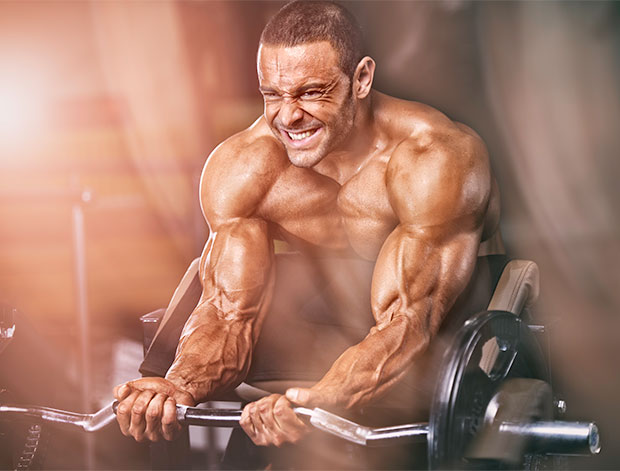
Different weight training sets
It’s important to keep refreshing your routine, explains Terry. “Once your body knows you’re doing the same thing week in, week out, it’ll make it easier.” Your body naturally resists breaking down muscle groups – and it’ll adapt (i.e. plateau) to avoid doing this wherever possible.
(Related: Here’s how to bust through a plateau)
You don’t need to design a fresh plan every three weeks. Scaling up weight and modifying reps are obviously both important for progression, but playing with different set styles will shock your body and keep things interesting. Remember, bodybuilding isn’t meant to feel like a chore. Below, we explain eight different types of sets to help you build muscle more efficiently during bodybuilding training.
1. Straight sets
The standard way of arranging your workout – you perform a number of sets using the same number of repetitions and using the same weight, with a rest period in-between. You should start with this style and build up to the others.
(Related: 8 tricks to make every rep count)
Example: 10 reps on the bench press, rest and repeat
2. Drop sets
Drop sets allow you to continue your workout past the point that it would usually end. When your muscles are screaming ‘no more’, what they’re forgetting to say is, ‘…at that weight’. By heaving less weight you can keep working out for longer.
Example: Leg press to failure, reduce the weight without resting. Leg press to failure with the new weight, and then reduce the weight without resting. Continue until you can’t.
(Related: Why your muscles twitch when you lift weights)

3. Super set
When two (or more) different exercises for opposing muscle groups are performed one after the other, without a rest period – upping the intensity, and allowing you to complete more work in less time.
Example: 10 reps of bicep curls followed by 10 reps of tricep dips. Rest and repeat.
(Related: Do I have to lift heavy to build muscle?)
4. Compound set
Similar to a super set, except you perform two (or more) different exercises for the same muscle group.
Example: 10 bench presses followed by 10 press ups. Rest and repeat.
(Related: Does it matter how fast you lift weights?)
5. Pyramid set
Pyramid sets allow you to gradually up the intensity of your workout by increasing the weights and decreasing the reps with each progressive set. Bonus: the first set serves as a warm-up.
Example: Dumbbell chest press, building up the weight so you can complete 15 reps, then 12, then 10, then 8, then 6. No rest in-between.
6. Rest-pause set
You’re essentially breaking your set down into a bunch of mini sets with rest-pause training, which allows you to continue past your usual point of failure.
Example: 8 dumbbell preacher curls to failure, rest period, 3 reps to failure, rest period, 1 rep to failure.

(Related: How fast should I really be lifting?)
7. Time under tension
TUT — time under tension — training refers to how long a muscle is working during a set during the ‘eccentric’ and ‘concentric’ phase. If you perform 10 reps that take 3 seconds each to complete, your TUT is 30 seconds.
Example: By taking longer to lift the weight (2 seconds) pausing at the top (1 second) and taking longer to lower the weight (2 seconds) over 10 reps, you’re clocking up 50 seconds of TUT for the exact same rep: your muscle is just working considerably harder.
(Related: What happens if I always lift the same weight?)
8. Tri-set/giant set
A tri-set is three different exercises for the same body part performed back-to-back with no rest in between. A giant set is a tri-set with additional exercises and sets.
Example: 10 squats, 10 leg extensions, 10 lying hamstring curls

(Related: 5 mistakes you’re making when lifting weights)
You hear it time and time again, but the most important thing is to listen to your body. “I see how I feel on the day,” affirms Terry. “If I’m feeling strong, if I’ve had ample amounts of calories and rest, I will go for the heavier lifts – whereas if I’m dieting, I’m in a calorie deficit, I’m tired, then I’ll focus on form and volume.”
And as for exercises to avoid? Tempting as it might be, refrain from ego-lifting, he warns. Testing your 1RM might look cool, but it’s not an effective way of building strength – more of a fast-track to injury.
“Back in the day people would lift as heavy as they could, thinking that’s going to get them bigger,” says Terry. “Nowadays they’re a lot more educated. It’s about form and mind-to-muscle connection, rather than just mass weight on a bar.”
Cardio for bodybuilding
Weight training is your priority, but that doesn’t mean you can give cardio a wide berth. It all comes down to your end goal. “If you’re looking to compete, cardio plays a big part,” says Terry.
If you’re 12 weeks out from a competition, you want to maintain as much muscle as possible while torching fat from every angle. This means low-intensity cardio – high intensity cardio speeds up your metabolism and burns fat very quickly, so you run the risk of burning muscle too, Terry says – either first thing in the morning on an empty stomach, or immediately after your weights session, once you’ve depleted those glycogen levels.

(Related: The only type of cardio that gets you jacked)
If you’re bodybuilding for health benefits, cardio can still play a part – but you’d approach it very differently. Between two and three sessions per week is a good ballpark for bodybuilding beginners.
Bodybuilding diet: everything there is to know
Clichés exist for a reason — you genuinely can’t out-train a bad diet. It’s as simple as that. Once you get your head around bodybuilding nutrition, Terry says, everything else will fall into place.
“I would really focus on learning how macros work, how your body works and how it reacts to certain foods, and what your body requires each day to maintain your weight,” he advises. “Then you can start playing around with increasing calories [to bulk up], and decreasing calories when you’re dieting.” Our beginner’s guide to macros will definitely help.
(Related: How eating like a professional bodybuilder can make you fat)

First up, ditch processed foods (that includes coffee shop sandwiches and crisps) in favour of complex carbohydrates, protein, and plenty of fats. Improve the quality of your food, and you’ll find you can eat more, says Terry. “You can metabolise it a lot better.”
Terry eats six (big) meals per day, supplemented with two protein shakes. Avocado, eggs, salmon, mackerel, and steak all feature heavily, along with “a good amount of vegetables for the micronutrients”.
(Related: The MH guide to measuring food on the fly)
If the prospect of chowing down six times a day makes you feel queasy, start small. You’re still better off having six smaller meals – or meals and snacks – than relying on three big meals to burn fat, advises Terry.
(Related: The truth behind vegan bodybuilding)
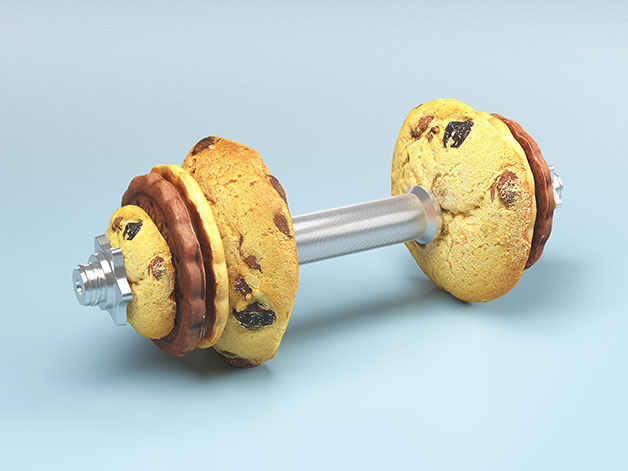
“Imagine you’ve fasted for over eight hours,” he says. “At breakfast, you’re firing your metabolism off really high. If you don’t eat for another five hours, your metabolism starts to slow right down and you have to try and kickstart it again with your next meal. If you eat every two and a half to three hours, it’s like chucking a log on a burning fire.”
(Related: 7 foods to instantly boost testosterone)
When Terry’s dieting for a show, every calorie counts, but otherwise he takes a far more relaxed approach. Constantly monitoring calories and macros can burn you out – once you’ve figured out your own individual needs, view them as a reference rather than religion.
(Related: The best protein powder money can buy)
Can you have cheat meals and ‘re-feed’ days?
You can’t scroll through Instagram without clocking a mammoth cheat day feast, but are real-life bodybuilders consuming such a crazy amount of calories every couple of weeks? Not quite. When he’s dieting for a competition, Terry incorporates ‘re-feed days’ into his schedule. This means he eats the exact same food, but essentially doubles the portion sizes.
(Related: The truth about ‘dirty’ bulking)
It will only be effective if you’re low in body fat and fully depleted of energy. “It reboots your metabolism, firing it back up to start burning at a higher rate again, and gives you better pump – so when you’re training, it forces blood around your body,” says Terry. “It also impacts your lectin levels and cortisol levels and hormones.”
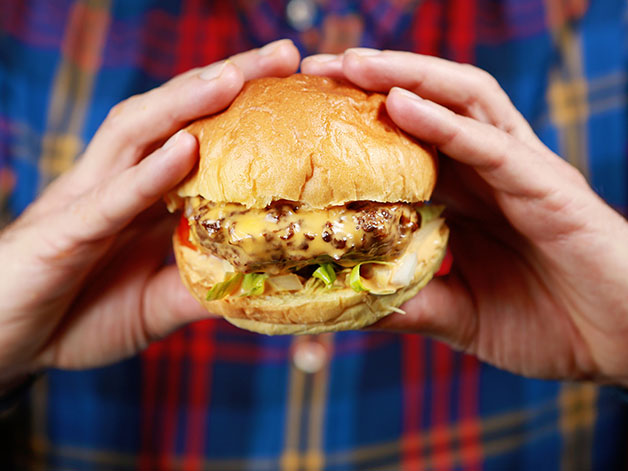
If you’re not preparing for a show – or you’re simply looking to fill out your shirt – Terry advises avoiding cheat days and re-feeds and take a more chilled approach at the weekend instead.
(Related: Here’s why cheat days won’t boost your metabolism)
“Every weekend I’ll have one day where I’m relaxed and don’t think about what I’m eating,” he says. “You need that sanity. Some people have these cheat days and they just go absolutely insane. You can actually create dietary problems doing that, your body isn’t used to it.”
Are supplements necessary for bodybuilding?
It can be easy to get swept up in supps, but Terry reckons there are just two worth splashing cash on. Firstly, a quality whey protein – he recommends USN’s Blue Lab Whey, which combines whey isolate, whey concentrate and hydrolysed whey – twice a day: first thing in the morning, and post-workout.
(Related: 8 common protein shake mistakes)
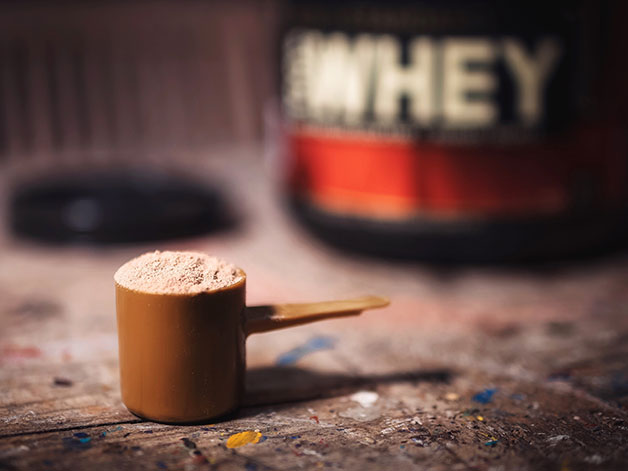
“The reason for that is the absorption rate,” he explains. “It’s the only reason you’d pick a supplement over a solid meal. A chicken breast will take two to three hours to digest, whereas a whey protein will take an hour. When you’re in your anabolic window and you need to replenish all your glycogen cells, whey protein is the best option.”
(Related: The best supplements for men)
He also recommends sourcing a decent BCAA supplement to take pre and intra-workout. “It helps the breakdown of muscle, counteracts fatigue and starts the recovery process,” he says.
Bodybuilding tips – a final word
Nail your nutrition, work smarter in the weights room, and shake up your set styles. When you put it that way, it sounds easy. But there are two more pieces to the puzzle. The first is recovery. Get to know your foam roller.
“I’ve been training for 15 years, but I’ve only really started to stretch pre- and post-workout in the last five years,” says Terry. “That was one of my schoolboy errors. I just used try and lift heavy weights, and that’s when I created quite a few injuries. Now I have physio every week.”
(Related: 7 horrifying consequences of taking anabolic steroids)
Our beginner’s guide to mobility and stretching will see you right. The second? Dedication. It’s cheesy, but the only way you’re going to progress is by sticking to your plan. If you’re serious about scoring bodybuilder muscle, there’s no space for pizza and pints. You have to commit.
You now know all there is to know. The next step is up to you.
Ryan Terry is an ambassador for leading sports nutrition brand USN. To find out more visit www.usn.co.uk.
